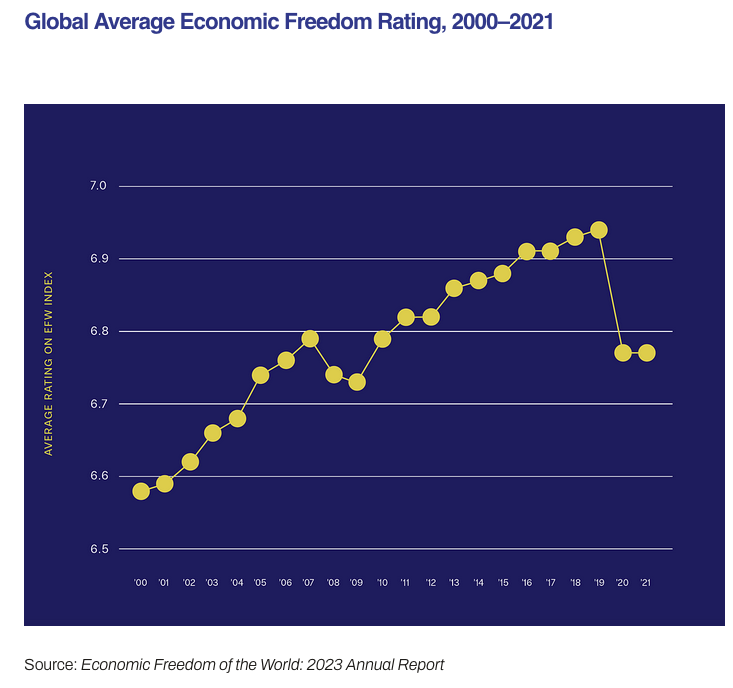Through Progress and Peril: The Precarious State of Human Freedom
By Johan Norberg,
Just when you thought history had ended, it taps you on the shoulder. Then punches you in the face. In the past decade or so, the ideas of liberty have been challenged by new forms of populism, nationalism, and authoritarianism. Strongmen in democracies have dismantled checks and balances to remain in power. Countries like Russia and China have taken a totalitarian, aggressive turn and, after subjecting their own citizens, have set their sights on destroying neighbors like Ukraine and Hong Kong, and possibly Taiwan. The global wave of democratization and liberalization since the fall of communism is over. Toward the end of 2023, The Economist observed that it was possible to walk across Africa, from the Atlantic to the Red Sea, and pass only through states that had suffered coups in the past three years—at least until you were kidnapped. In the United States, the most illiberal elements of the right and the left are on the offensive. Declaring that they are each other’s opposites, they are really mirror images of each other. Both are intolerant, interventionist, and impatient—viewing constitutional constraints and the separation of powers as anti‐democratic restrictions on the will of the people. Some storm the Capitol when they lose an election; others storm the stage when they lose a debate. The common denominator is that they consider diversity a weakness and dissent as betrayal.
How Does Illiberalism Rise? One fascinating study showed that people want to fit in or stand out depending on the movie genre they are exposed to. Researchers assigned groups of people to watch either a horror or romance movie with varied commercials inserted throughout the film. The commercials advertised products or services marketed as either popular—such as a museum “visited by over a million people a year”—or niche—like a limited‐edition tchotchke. Interestingly, those who had been scared by a horror movie rated common and popular goods and services more highly than products presented as different and unique. People who had been cheered up by a romantic film had the opposite preference—they would rather have a product that made them stand out from the crowd.
Still the Best Time to Be Alive Before we despair, these numbers must be put into historical context. Freedom has declined, but from levels that were probably the highest the world has ever experienced. The Human Freedom Index records a high point for liberty in 2007 with a global all‐time high for economic freedom in 2019. Since 1975, when Daniel Patrick Moynihan predicted that democracy would survive only “in isolated or peculiar places here and there,” the share of countries that are electoral democracies has doubled from 23 percent to more than 50 percent. The share of liberal democracies has never been higher. Fraser’s economic data reveals that if a country today had the world average of economic freedom from 1980, it would now be considered a socialist basket case—just the 154th freest economy out of 166. All things considered and despite recent declines, we are still at a historical high point for global liberty, and this is essential, because it gives entrepreneurs, researchers, and consumers the freedom to innovate the world out of most problems. Consider the fact that we have had 20 years of crises, war, terrorism, pandemics, and lockdowns, and still, this has been the 20 best years in history, when looking at indicators of human well‐being. Around a third of the income level mankind has ever attained was produced during these two decades. Global extreme poverty was reduced by more than 130,000 people—every single day. The child mortality rate almost halved: 4.4 million fewer children died in 2022 than in 2002. Chronic hunger was reduced by almost a third. At the same time, global inequality declined for the first time since the Industrial Revolution. Not bad for 20 years of never‐ending disasters. The explanation? Mankind’s ingenuity and adaptability.
More From CATO Institute:





